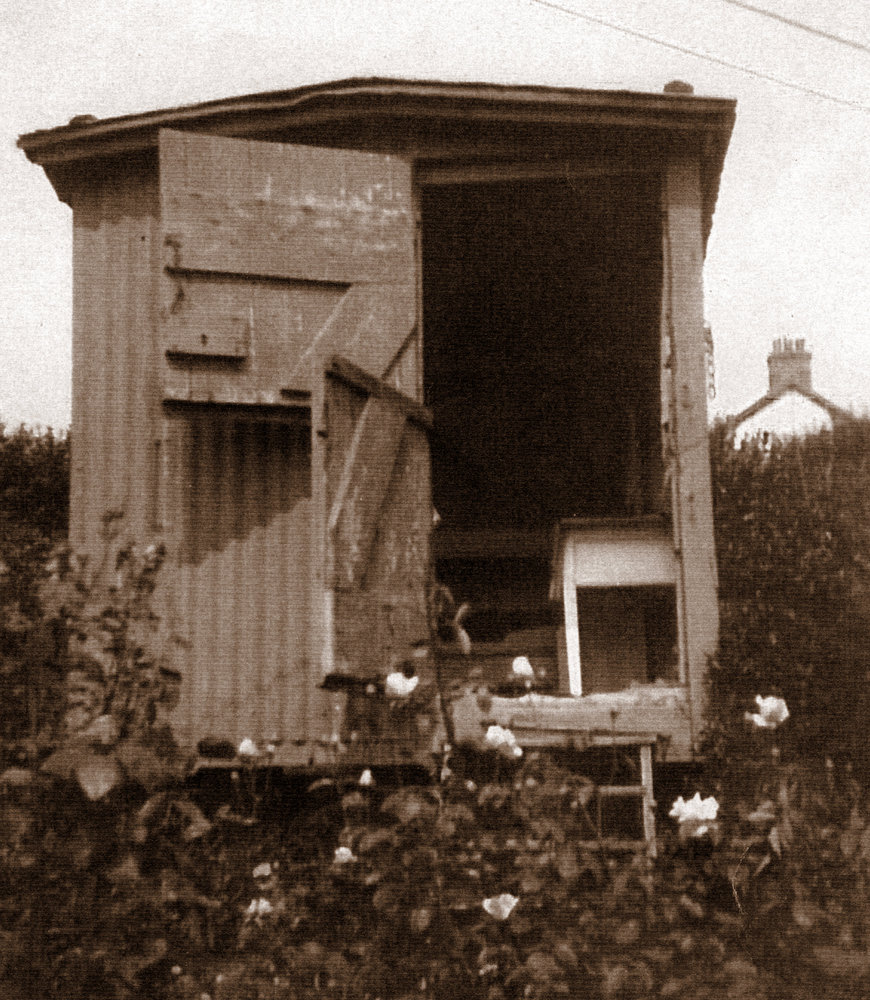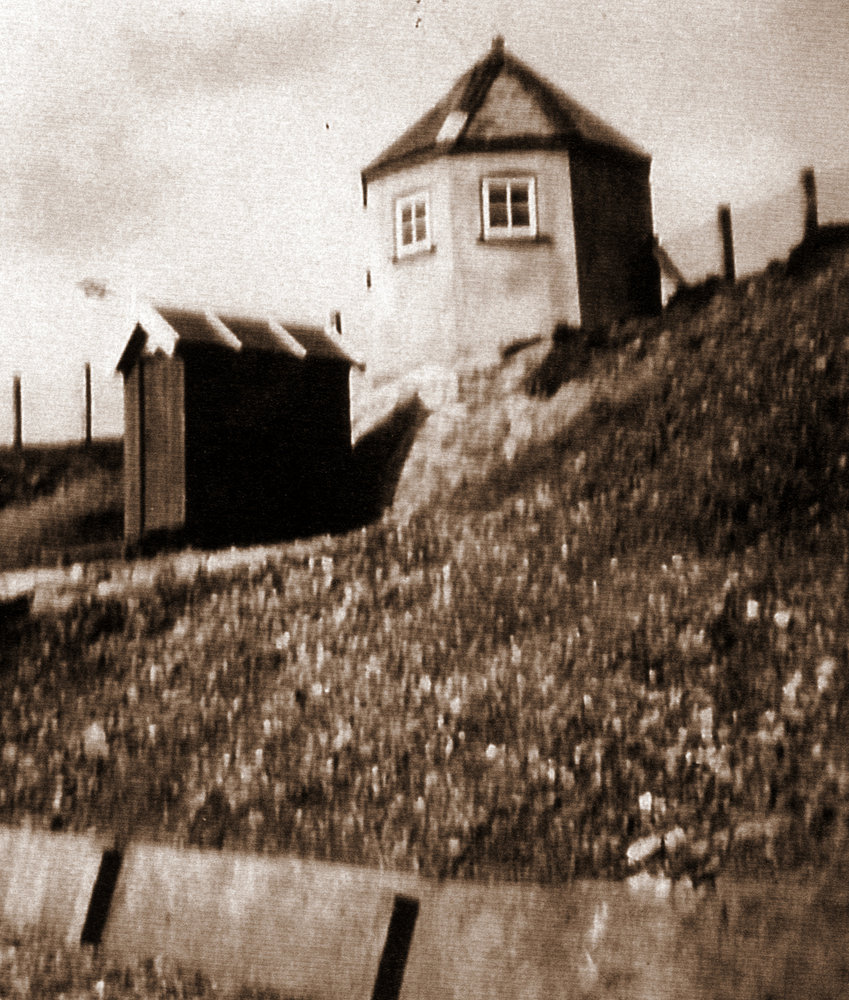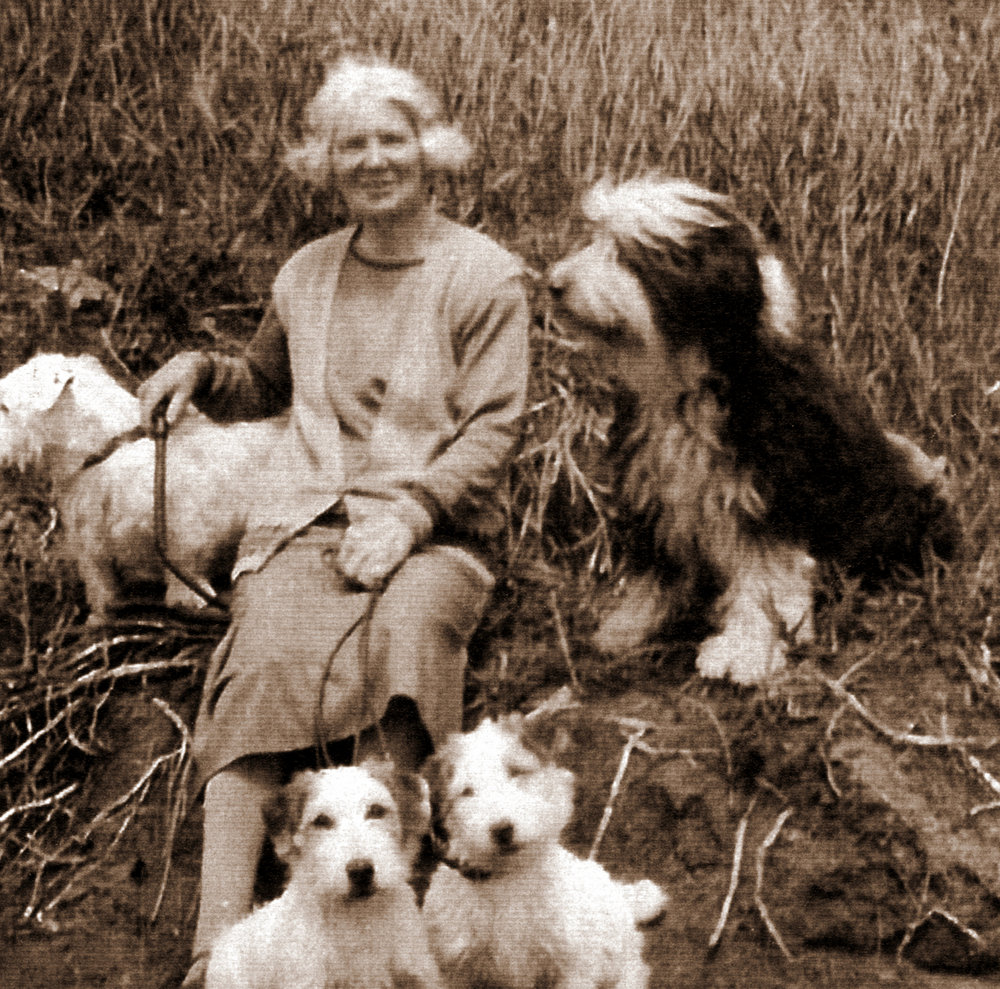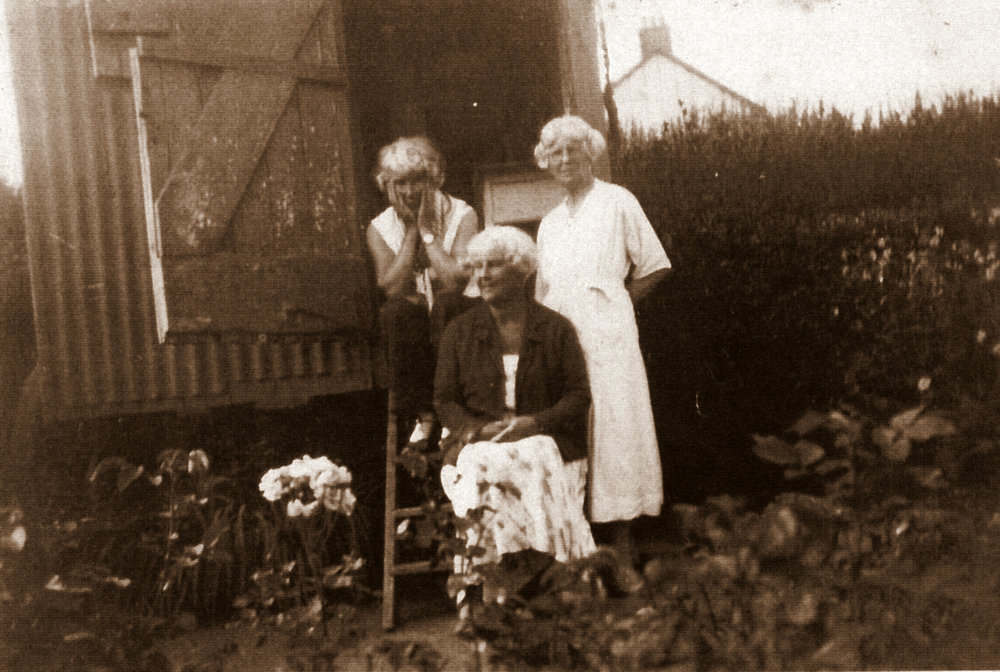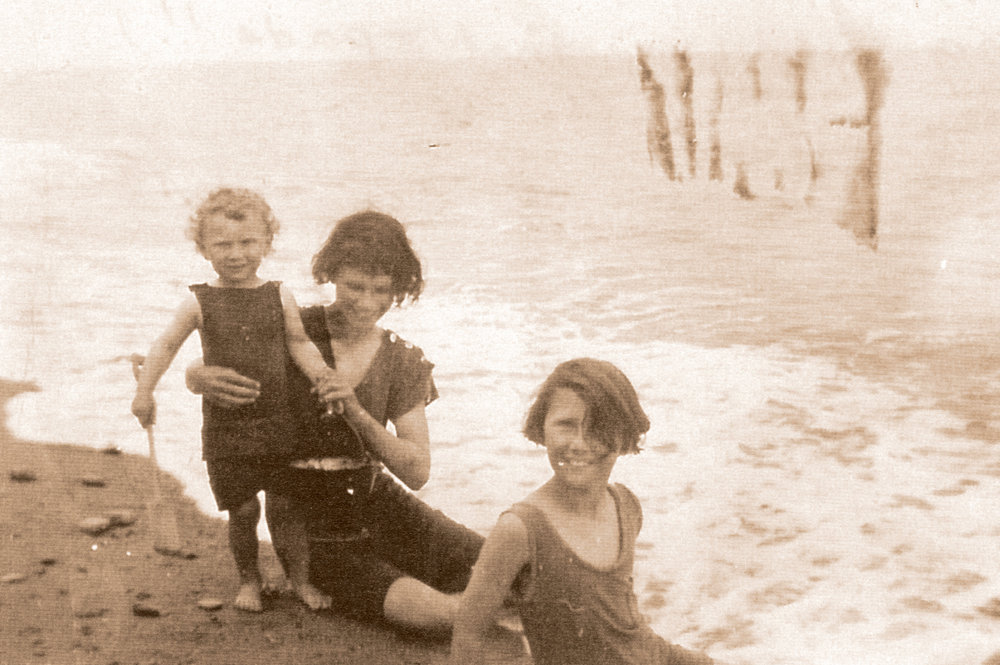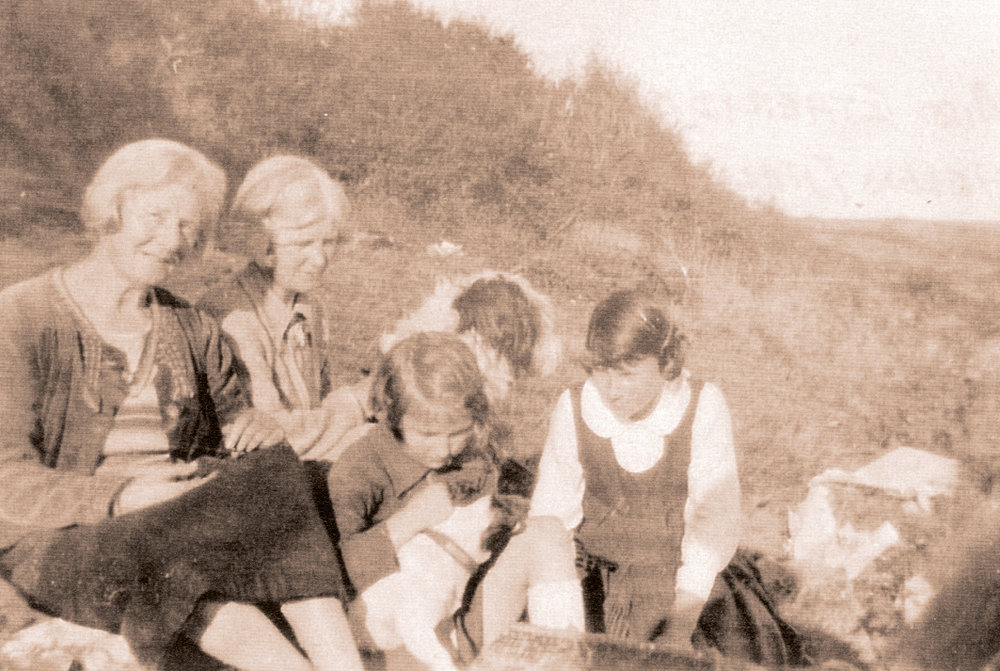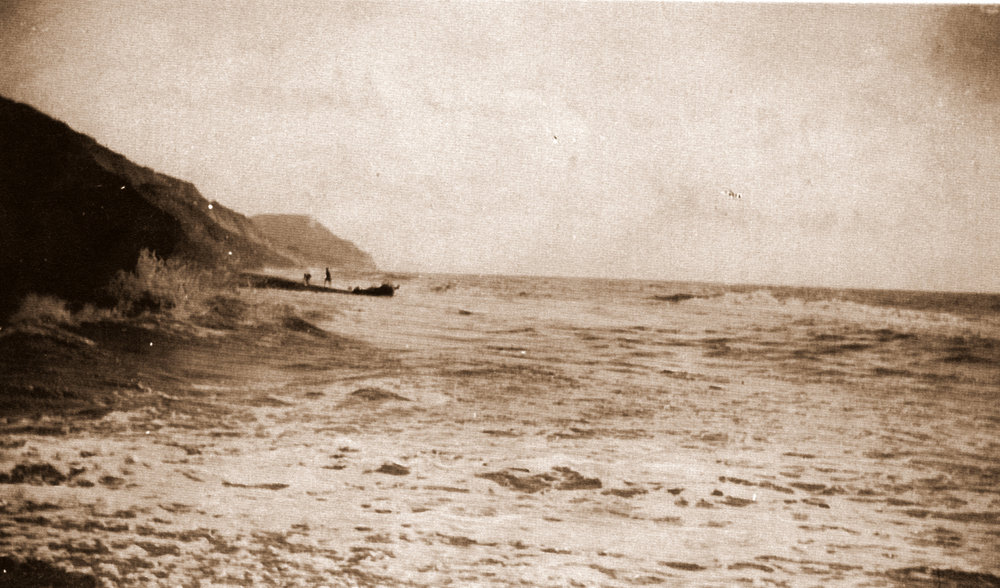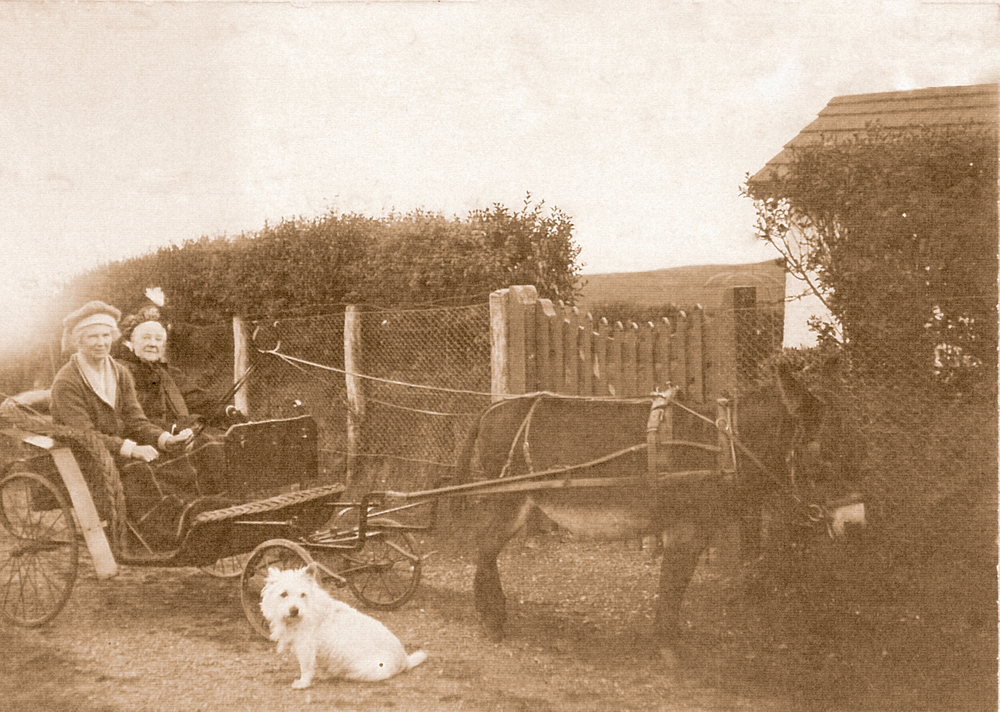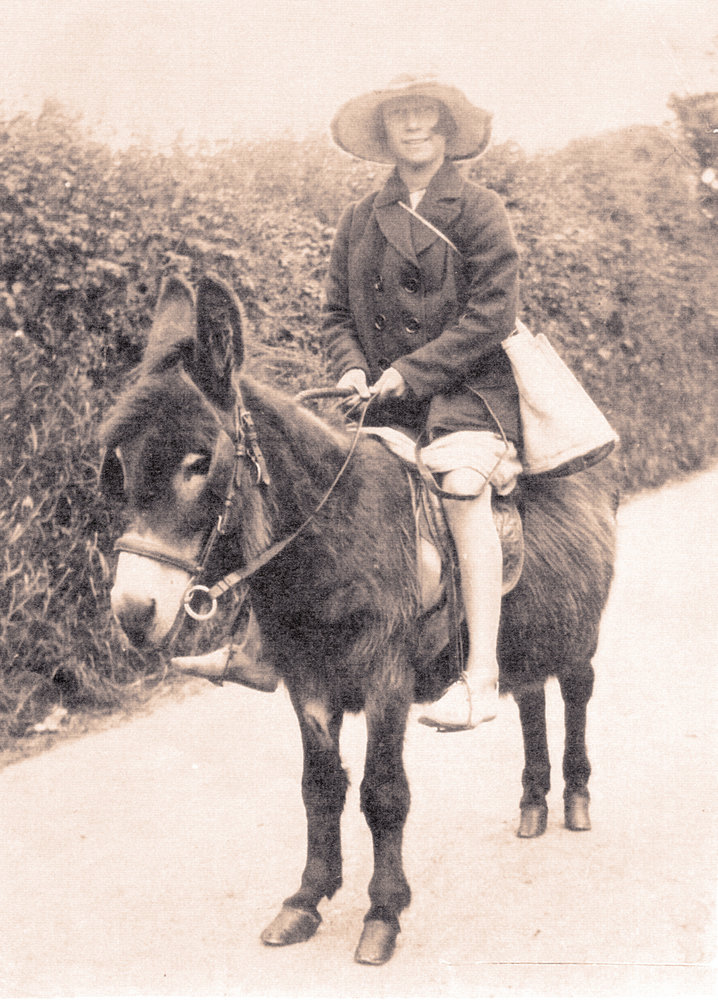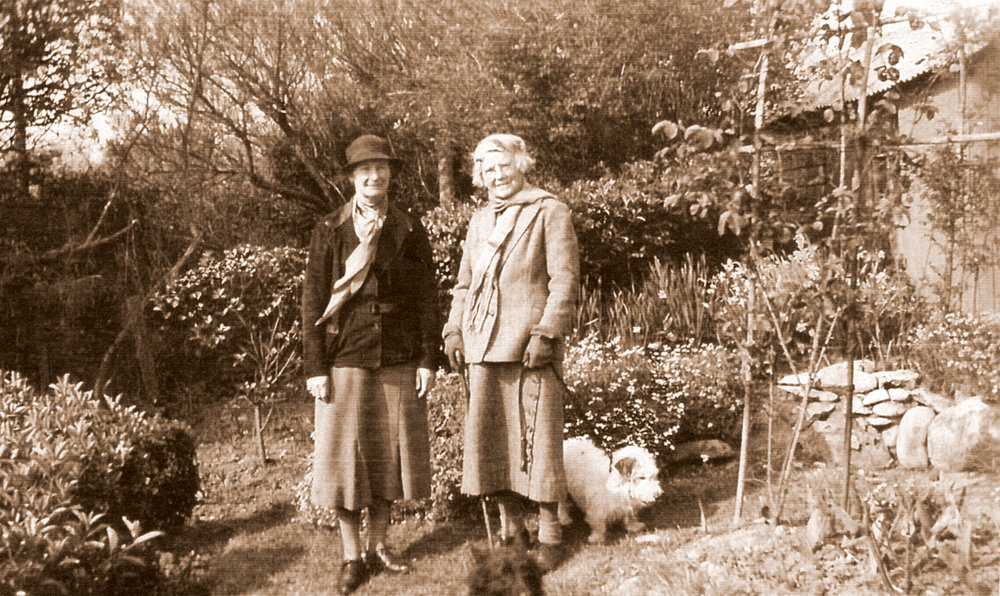People & Places in Charmouth 1924-1942
as remembered by a schoolboy whilst visiting his aunt during that period
Click on images or Charmouth Home to return back.

1. The old factory: A lime works used during this period by the fishermen for storing their rowing boats, nets and pots - it always had a wonderful smell of tarred rope. It was here in the winter that the men mended their nets and made the willow crab pots. None of the boats had sails and would be launched from the beach. Quite rough seas - the oarsman always standing up to row with the other fisherman in their boats pushing the boat off through the breakers. It was all potting, long line, nets and during the summer (especially when the huge shoals of mackerels came in, someone was always posted up on the cliff to watch for the shoals to come in.one end of the nest would be put into a boat and rowed frantically around the shoal and back to the shore. Both ends of the net would then be pulled in (holiday makers encouraged) and the thousands of mackerel landed, to be hawked around the countryside the same day - even as far as. Chard or Ilminster).
2. The old lime kiln. In the early 1930's this was used as tea shop run by Mr. ? who lived at 39.
3. A look out - coastguard , militia.
4. A square area of naked shingle surrounded by a low chain fence and with a flag- staff in the middle. Militia?
5. "Thalatta" ( Greek for the "Sea" ). The holiday home of Sydney Barrett - He became M.D. of a big chemical company and lived at Crowe Hall in Bath and was later Knighted. I used to play with the youngest daughter. It was commandeered by the army in 1940.
6. The Red Bungalow. Built by my father for my grandparents Louis George and Mary Ann Derrick in 1909. It was lived in by my aunt Helen (Nell) until her death in 1955. My other aunt Margaret (Madge) joined her in 1938 after she sold her nursing home in Monte Carlo.Aunt Nell was not well off and used to let the bungalow at £3 per week all through the summers taking cottages at 10/- a week, the difference supplementing her income. The cottage were " The Stannage" at Raymond's Hill and St. Gabriel's Cottage ( which she preferred! )
7. The home of Fielda Long, daughter of Long the ironmongery at 17. She went to Lyme Regis Grammar school with my sister Peggie, who went there because there was no. Girls Grammar School at. Chard where we lived.
8. A bungalow lived in by Mr. Alefounder. He never wore clothes on the beach and my aunt used to say " it's only Alefounder, he'll use his newspaper! Contrary to belief that generation were not ... for ... My aunt or any of us wore anything if there was no one about or some distance away.
9. A bungalow. Mr. and Mrs Le Froy. A tall gentleman with a beard who had lived in South Africa. His wife was also very tall, was great friends with my aunt, and died at a nursing home near Ringwood in the 1960's well over a 100.
10. The home of Miss Howard and Miss Brenman. Miss Howard was a cousin of the Duke of Norfolk and was paid to keep away from the family as she lived in a lesbian relationship with Miss Brenman ( not done so publicly in those days!). Miss Brenman always looked raddled, wore violet make up, wore mans clothes and had a mans haircut.
11. Chalet - bungalow. Woodruff used to play with their nephew Peter when he was also on holidays. We had a hide out in a third thicket on the cliffs where we used to swap and read comics - Hotspur, Rover or the Scout.
12. Chalet Bungalow. Mr and Mrs Turner. He was editor of " The Somerset Countryman", a magazine published in Ilminster. Friends of my sister, Jane.
13. The home of Miss Evans Chauffeur - Mr. Spurdle. On retirement he lived in 9.
14. Hammonds Mead. A large house lived in by Miss Evans, a wealthy spinster and friend of my aunt. She was extremely deaf and had a whiskey chin! As a personal favour we were allowed to take the shortcut up her drive from lower to higher Sea Lane. When she died she gave the field to the south and a field on the other side of the river (52) to the village, never to be built upon. The house became an Hotel.
15. A wood and corrugated iron bungalow, lived in by Mr. Grinter - a fisherman.
16. Newspaper, Stationery and toy shop run by Miss Tarr. A gloriously dark jumble and muddle which I loved. She was old, little, sallow skinned with a moustache and always wore black clothes.
17. Iron mongrel and oil merchant.
18. Dr. Chamberlains house and surgery.
19. The singing kettle Tea Shop.
20. The New Inn
21. Miss Copp. The ground floor of her house was used as a little haberdashers and dress shop.
22. Annie Start. A wooden bungalow. She was a char lady for my aunt and others.
23. The home of a Lyme Regis Estate Agent. For a time I was friendly with their son and daughter. This ended as follows. When I was ten or eleven I was allowed to take one of my aunts dogs, a Sealyham named "Pensee" for walks , but he was a great rabbiter and coming by "Thalatta" one morning there was a kitten on the path which he mistook for a rabbit and before I could part the. ( I beat him with a walking pole) he had disembowelled it. So I put it out of its misery with my pole. This was seen by two children and thereafter they spread the name "murderers" around the village.
24. Dampiers grocery and provision shop.
25. The Star Inn.
26. The home of the Misses Whittington's - descendants of the famous mayor of London. Going to tea there was always a grand event for they were a charming couple.
27. A bungalow built as a holiday home by Mr. And Mrs. Geoff Gillingham, their children Sheila and Peter of Chard.
28. A new bakery built about 1934 - it had an " electric kneading machine" the first in the whole area.
29. The Coach and Horses Hotel. Managed by a Miss Overmass, whose fiancée had been killed in the Great War. A friend of my aunts and who used to take me on expeditions to Exeter, etc. in her car - a treat as we didn't have one. She was interested in everything, and showed me much of interest in the area.
30. Marsh the butcher.
31. Bragg's Store and Grocery Shop.
32. Gears Garage - they also had the new car park.
33. Smiths the Chemist. Next door in this "modern " block was a fancy shop selling deck chairs, beach balls, etc - Lloyd's bank.
34. The Queens Arms Hotel. Once when I was small was taken to dinner ( in the evening) by my mother on a gale ridden night in August. - why?
35. The thatched Post Office run by Mrs. Pidgeon and her daughter Joan. One of my earliest recollections is of staying there in the summer ( why I don't know) for a holiday. I remember violent earache one night. Also remember rushing to the window every time that rare event occurred of a car going by. It must have been about 1925/6.
37. Loosemoors Farm.
38. Bugler, Greengrocer and Fruiterer. Also Coal Merchant.
39. Loved in by Mrs. ? And her daughter Rosemary, who as a boy of 12, I always tried to lose! We camped in her field bounded on the south and East by the stream. She had a goat which she always milked into the grass until my mother insisted as having it to make milk puddings and got coffee - it was no good in tea. Going camping there for the whole summer holiday in 1935, 6,7,8. & 9 was a great event. A lorry was hired in Chard( Mrs. Voysey) to take our three big tents, lavatory tent, bed, chairs etc. Mother was a keen fisherman and liked Trout - which she caught quickly and illegally with a grasshopper. Once the owner Colonel Bullen caught her on the Char, but she flicked the line and the grasshopper fell off. colonel Bullen saying " she wouldn't catch an eel without bait" . As it happened she also fished for eels which she liked but no one else did. The same families came back on holiday camping year after year and we always looked out for them. One family we were particularly friendly with were the Clayton's, their son Francis ( my sisters fancy), Raymond my age and Liz who had to tag along. Also "Big Frank" a cousin and good artist who went into the Royal Engineers camouflage unit in the war. Just to the north of Newlands Bridge was a deep pool which we bathed if we hadn't time to go to the beach and it was very hot. No one ever bathed in the Char Below its confluence with the other stream. Charmouth raw sewage in that one!
40. Newlands Farm. Rabbits bought there 4 pence each skinned 6d. In skinned. ( the skins themselves fetched 2d each to dealers).
41. Newlands Cottage. Miss Etheridge. A brilliant vile nits and great friend of my aunt. Aunt Nell was a concert standard piano player and they used to have evenings of playing together. She 'went funny' and eventually cut her throat with a razor - badly. For she lived 2 days afterwards.
42. It was in this row of cottages lived Charlie Larcombe, a fisherman. He was fat, with a round red cheerful face always smoking a pipe. Wore rubber thigh boots turned down over his knees (they said he has no other footwear! ) and a blue fisher mans sweater.
43. The house of Sidney Smith. Another fisherman who used to take me out when he collected his pots in the morning. I used to trawl for mackerel for breakfast. It used to be cold seeing the sun rise from the sea in summer. With Ted Hunter, used in the summer to look after the bathing tents and deck chairs in the late 30's.
44. The home of Dr. Lang, an eminent geologist to whom I would take fossils whose name I didn't know.
45. Became a small zoo and aviary.
46. Tin Town. So named because of the corrugated iron shacks that were there. Looked down on by the whole village.
47. A concrete platform which I was told had been the foundations of a 'Pavilion' at the turn of the century.
48. A raised area where shingle was heaped for the rain to wash the salt from. This was dug from the beach by Mr. Back around (49), shovelled into a putt( a two wheel cart) and pulled out by two horses.
49.
50. The old sodden groin was replaced by steel uprights put in by a steam hammer some time about 1931/2. It was too efficient and had most of the wood taken out before the war.
51. The two camping and touring caravan site.
52. Miss Evans field which was mined in 1940 and in which the cow was blown up in!
53. Cain's Folly. A very steep fir wood of pines, which were cut for timbers in the 1939 - 45 war.
54. A corrugated iron building in the north east corner of the playing field which housed the gas engined power generators for Charmouth electricity supply. Installed in the Red Bungalow about 1929/30.
55. Double Common. Two fields across where there was a right of way and which were supposed never to be built on.
56. This is a contractors caravan put into the garden of the Red Bungalow by my father in about 1918 so that the family could holiday there(my grandmother was then still alive). My sister always had it, summer and winter, when she was at school in Lyme and I used it when I cycled down 1938- 42. I was there in September 1940 aged 16 and in my school cadet force. Thalatta was occupied by the defending force of 12 men, a Lieutenant and one 2 pounder ex- naval gun mounted on the back of an old lorry. The cliffs and neighbouring fields had been mined and an anti tank barrier of steel pipe scaffolding and a barbed wire entanglement had been erected across the large stretch between the cliffs and in front of the old factory. At two o' clock in the morning of 5th September I was awakened ( the caravan doors were open) by the noise of the troops being called out. I went over and was told invasion was imminent and would I go up on the cliff with the Lieutenant and act as a runner. The sea was dead calm and with a bright moon the conditions were ideal as their was also a slight haze. I remember thinking 'that is it'. But the Germans never came for it was a false alarm - not an exercise. Later I saw my first German Plane shot down, from the cliff top above Cains Folly. After the dog fight three crewmen jumped - two parachutes opened, the third 'candled'. A RAF rescue launch came out from Lyme and picked them all up. A Chard doctor, Dr. Granvill, pronounced one dead and he is buried in Lyme Cemetery. The Lieutenant in charge at Charmouth was a keen swimmer and had a hole left in the defences so that he could get to the beach. I was also allowed to use it and had the whole beach to myself ( Golden Cap to Lyme! ) but on the strict understanding I did not go up the cliffs, for many were mined. For days on end never saw a sole and never wore a stitch! One further thing. The troops at Thalatta had no binoculars so my Aunt gave them her pair - but after the war they were returned from wherever they had finished up - to her great surprise. I still have them.
57. When the first coach road was constructed from. Charmouth to Lyme, a cutting was dug to ease the slope at the top of the hill. It always caught the wind and was known as 'The Devil's Bellows'. After my parents had been married at Charmouth Church on 15th July 1912. They went by carriage to Lyme Station over this road, which slipped in 1924.
Derrick Warren
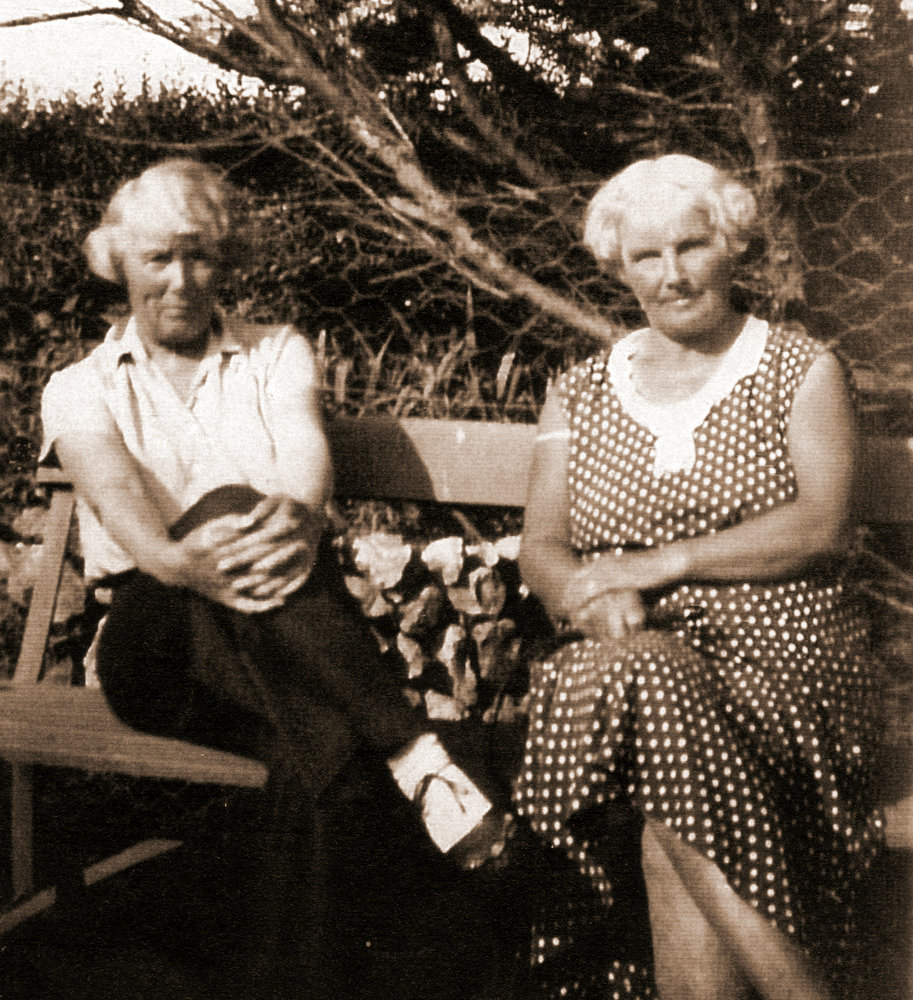
When Mr. Pass of Wootton Fitzpaine had houses built for his workers and a new Village Hall he employed a Chard architect - Mr Yeomans. His work was not thought much of in Chard and the results at Wootton Fitzpaine confirm this.
In about 1934/5 a French wooden brake was wrecked on the beach in a gale during the winter. The French Vessel was wrecked under Black Venn and it's cargo of onions washed up on the beach together with many briar pipes, one of which I kept and was my first pipe. After the wreck the seas were thunderous and standing by the Factory I saw the steering wheel in the wash of the breakers - unfortunately Ted Hunter has also seen it and he had Thigh Boots. No love was lost in the wreck.
Possibly remembered by some was my Aunts donkey 'Patience'. She had been bought, together with a four wheeled wicker bodied donkey chaise sometime 1914-1918 to get my grand mother around. It was used to take my Aunt to her various summer cottages and for occasional trips to Chard to visit us. I vividly remember on one occasion, when I was with her, being cheered by onlookers in the middle of Chard when Patience decided to stop and I stood up or whacked her! Patience also had a pannier and took our picnic things, chairs, kettle tea pots, etc. On one memorable occasion we were going to go to Golden cap along the beach Patience stuck her toes in the middle of the river mouth and then ditched everything into the river! Patience had a winter stable next to the Chaise House and a summer shed. My Aunt later rented the field above and that was Patience's undoing. She developed a sweet tooth and visitors going down the lane fed her sweets. Her teeth rotted and she had to be put down.
If a car was needed to be hired my Aunt had Mr. Stapleforth.
Her jobbing gardener was Mr. Back.
The ground immediately to the west of the Red Bungalow was like a grass Road over which there was a vehicular right of way to the Bungalow. It had been intended as a road to more bungalows above Thalatta, but the ground proved unsuitable for building.
The slabs of concrete that can be seen down over the cliff edge at Stone barrow are the remains of the Radar Station. After the war (1957) the helicopter station on Stonebarrow was commanded by Flight Lieutenant Parrott.
The concrete slabs stretching seaward east of the river mouth are the remains of anti tank concrete blocks, to stop any vehicle landing along the coast below Stonebarrow or St. Gabriel's Mouth from accessing the level area at the River Char's mouth.
In the 1930's Charmouth Street up the hill was one of the first in the country to be laid with reinforced concrete. Unfortunately it was laid in slabs and over the years with heavier traffic they moved on their foundations every time a heavy vehicle went over them, causing severe vibrations which started to cause damage to road aide properties. Because of the re-enforcing by steel rods, when, in the late 1950's it was decided to have it all up and lay a conventional surface, great difficulties arose. In the end a special piece of equipment (said to be the only one in the world) was bought over by Germany to break and cut it all up.
In Lower Sea Lane, opposite the house occupied by Dr. Lang, were two houses always held up as a supremely bad example of Jerry- building. Much altered they are still standing.
There used to be a right of way along the east bank of the River Char between the bottom of Stonebarrow Lane and the footbridge. Is it still passable, as I remember a large slip in the bank.
